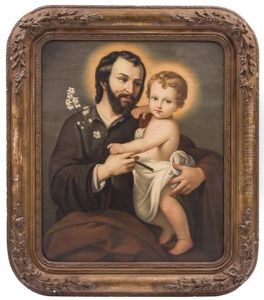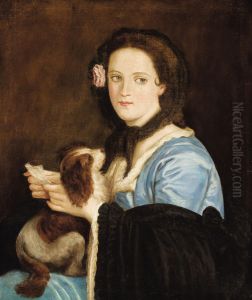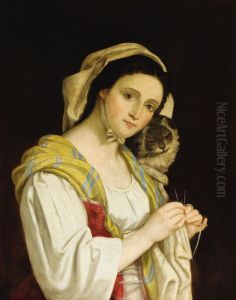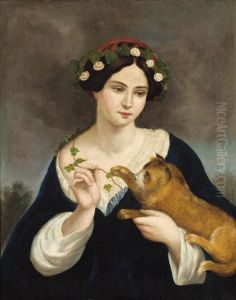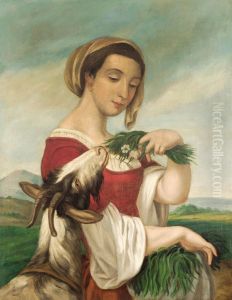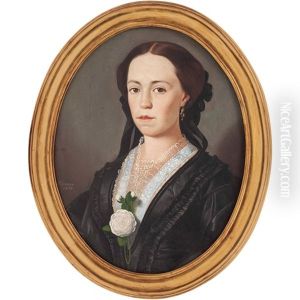Juan Cordero Paintings
Juan Nepomuceno Cordero was a notable Mexican painter who is recognized for his significant contributions to art during the 19th century. Born on May 16, 1822, in the city of Irapuato, Guanajuato, Mexico, Cordero demonstrated his artistic talents at an early age. He moved to Mexico City to pursue his passion for art, where he studied at the renowned Academy of San Carlos, which was the premier institution for art studies in Mexico at the time.
Cordero's artistic style was greatly influenced by European classical traditions, which he embraced after traveling to Europe to further his studies. He spent a considerable amount of time in Rome, where he was exposed to the works of the Italian Renaissance and classical antiquity. This exposure is evident in his precise drawing technique and his use of chiaroscuro, the strong contrasts between light and dark, to create three-dimensional effects on a flat canvas.
Throughout his career, Cordero was recognized for his mastery in historical and religious painting, portraiture, and mural painting. One of his most famed works is the mural 'The Assumption of the Virgin,' located in the Mexico City Metropolitan Cathedral. This masterpiece is celebrated for its dramatic composition and the technical prowess displayed in the handling of perspective and anatomy. Cordero was also commissioned to create portraits for various members of the Mexican aristocracy and political elite, which were highly regarded for their elegance and realism.
Cordero's contribution to Mexican art extends beyond his paintings. He was an influential figure in the cultural scene of Mexico and played a key role in the development of the Academy of San Carlos, advocating for the modernization of its curriculum and artistic practices. His efforts helped to lay the foundations for future generations of Mexican artists.
Juan Cordero passed away on May 22, 1884, in Mexico City. His legacy remains impactful, and he is remembered as one of the leading figures in Mexican art history. His works continue to be admired for their technical skill and are preserved in various museums and collections, both within Mexico and internationally.
